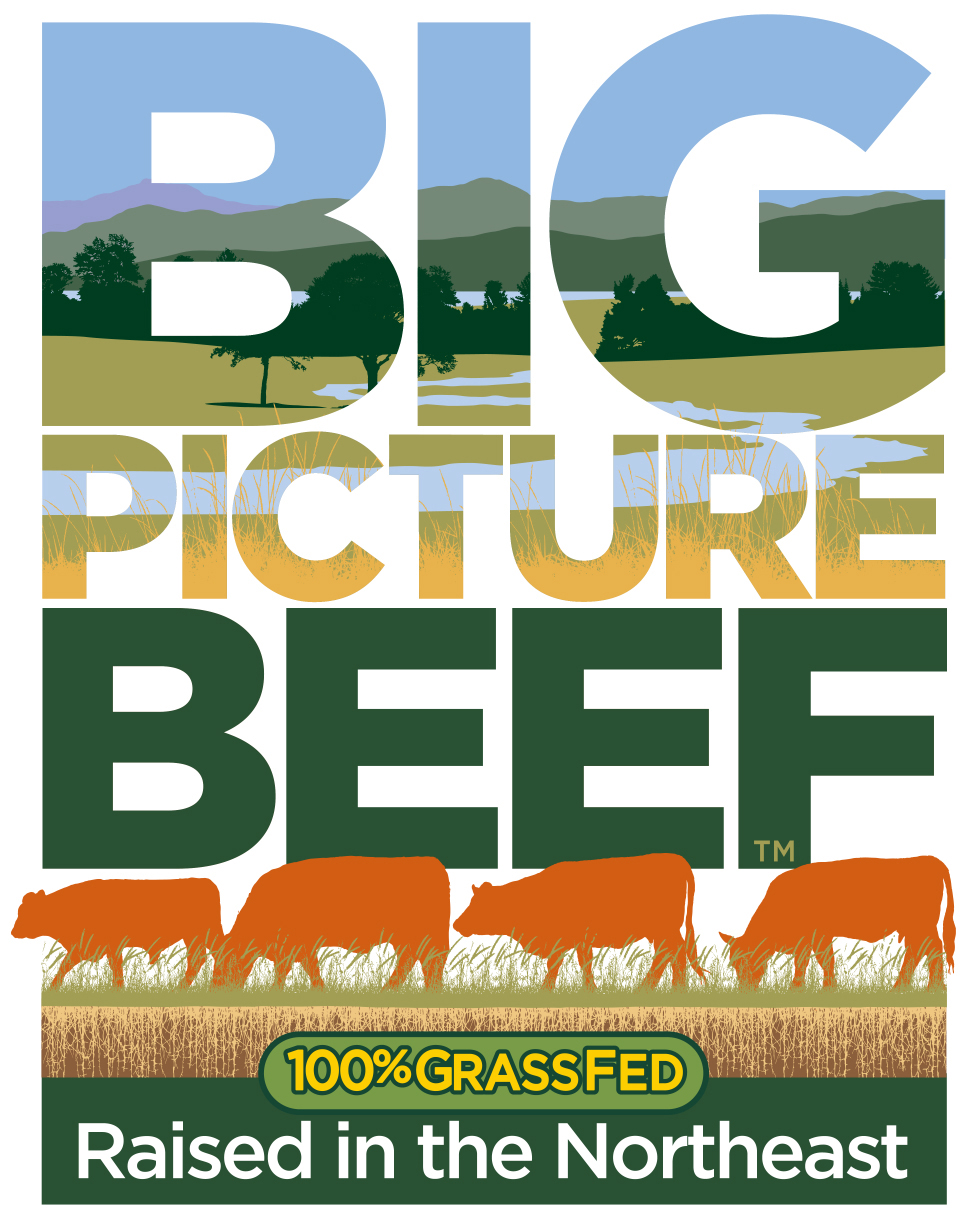This aerial photo of a feedlot shows a grid of cattle pens (brown) with roads for feed trucks (grey horizontal lines), and a huge lagoon of run-off urine and manure (green).
FEEDLOT BEEF
Most of the beef cattle raised in the Northeast are aggregated and trucked west to be fattened for market in a feedlot. US feedlots are concentrated in the Great Plains, the Corn Belt, the Southwest and the Pacific Northwest, though some are located in other regions.
All beef cattle start life on grass, which is the natural food for a bovine, but after weaning most cattle are fed corn, which is an unnatural food and sickens them. Not all feedlots are the same, but most feedlots and other industrial operations also feed various “concentrates” – by-products from other industries, including the candy industry. (Candy is also fed to dairy cattle; a report from the University of Wisconsin on by-product feedstuffs suggests that the upper limit on candy and chocolate fed to dairy cattle should be 2-4 pounds per cow per day.) Other allowable feedstuffs are feather meal, chicken manure, and urea.
Some of the human health effects from eating feedlot beef are now recognized, such as the danger of antibiotic-resistant bacteria. But other potential impacts, such as health effects of eating meat from animals that were stressed or ill, are not well understood.
Many industrial beef production practices create health problems for people who eat the meat. Most of the problems listed below are caused by the feedlot diet, which is 70-90% grain (mostly corn) and concentrates:
Nothing except the genetically modified corn can live in this soil sprayed with glyphosate. The herbicide has killed all the weeds and left the soil barren.
E.COLI – The corn-based feedlot diet creates acidosis in the bovine rumen. This condition allows acid-resistant E.coli to develop. If passed on it can also survive the acid of the human stomach and cause illness, paralysis, or death. But bovines raised entirely on pasture – eating food that is natural for them – are unlikely to develop acidic stomachs and the dangerous bacteria that can be passed on to humans. A Cornell study found that switching cattle from grain to hay for the last two weeks of their lives reduced the incidence of E.coli. The chances of contracting the dangerous strain of E.coli from 100% grass-fed beef are slim to none.
MAD COW DISEASE – This fatal disease, caused by feeding ruminant animal parts to ruminants, was first identified in Britain in the 1980’s and has been transmitted to humans in the US and abroad. Subsequently FDA regulations have prohibited serving ruminant protein to ruminants, but still allow cattle to be fed feather meal, pig and fish protein, and chicken manure. A dairy cow with Mad Cow disease was identified in California as recently as 2012. Consumers can avoid risk of Mad Cow by eating beef raised on a diet of 100% grass and forage.
ANTIBIOTICS – Feedlot life is stressful for cattle. Because the corn-based diet and the concentration of penned animals lead to numerous health problems, feedlot cattle are routinely given antibiotics along with their food to keep them from contracting a fatal disease before they are slaughtered. Antibiotics are also given to promote rapid growth. This misuse of antibiotics is linked to the development of human pathogens that are resistant to antibiotics.
GROWTH HORMONE – Nearly all cattle entering US feedlots are given hormone implants. Commonly used hormones include three natural steroids and three synthetic hormones. Regarding the human health implications, research findings vary widely. In 2008 the European Union banned the use of all growth hormones in cattle.
OMEGA 6 FATTY ACIDS – Grain feeding can be detected in a laboratory test of the meat. Typically grain-fed meat has an unhealthy ratio of 10 Omega 6 fatty acids to 1 Omega 3 fatty acids. This out-of-balance ratio has been linked to cardiovascular disease, cancer, and autoimmune disorders, all of which are suppressed by a correct ratio of Omega 6 to Omega 3. Laboratory tests have shown that 100% grass-fed beef typically has a 1:1 ratio of Omega 6s to Omega 3s, which is optimal for health.
GLYPHOSATE (Roundup) – Residues from this herbicide, used worldwide to grow corn and other crops, are found in the most common foods of the western diet and have been implicated in a wide variety of diseases that have become prevalent since glyphosate was introduced by Monsanto in the 1970’s. Read more on the glyphosate page.
IRRADIATED MEAT – A common practice to protect against E.coli is to irradiate the meat, either packaged or in bulk. The US Department of Agriculture approves the practice.
One can assume that beef sold in the US – even beef labelled “organic” or “pasture raised” – has been fattened on grain unless 100% grass-fed is on the package. For additional benefit of eating 100% grass-fed beef, see health benefits on this site.
"Children can be exposed to multiple-drug resistant bacteria… through contact with animals given antibiotics and through consuming the meat of those animals.”
- Jerome A. Paulson, MD, American Academy of Pediatrics


